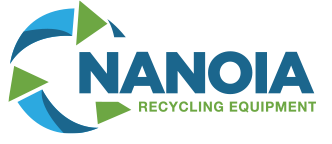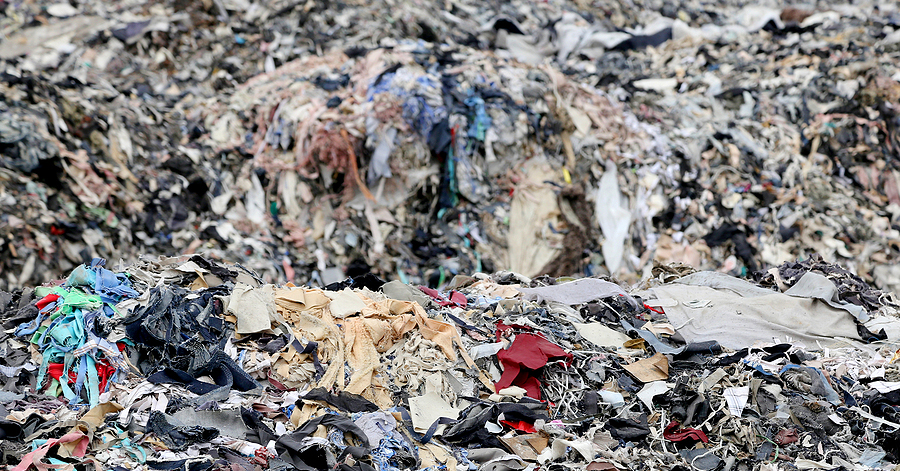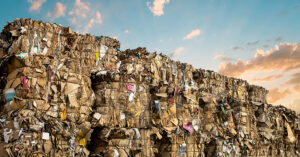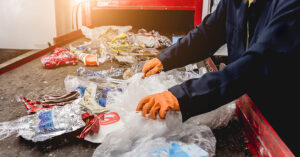Textile waste is a growing concern for many industries, from fashion to manufacturing. With the increasing awareness of environmental impacts and the push for sustainability, businesses need to manage textile waste effectively.
This guide will explore various strategies and solutions for dealing with textile waste, ensuring your business not only complies with regulations but also contributes positively to the environment.
Understanding Textile Waste
Types of Textile Waste
Textile waste can be broadly classified into two categories: pre-consumer and post-consumer.
Pre-consumer Textile Waste
- Offcuts and Scraps: These are the leftover materials from garment manufacturing. They often include fabric scraps, offcuts, and defective products that never reach the consumer.
- Excess Inventory: Sometimes, manufacturers overproduce items, leading to surplus inventory that can become waste if not managed properly.
Post-consumer Textile Waste
- Used Clothing and Household Textiles: Items such as old clothes, bed linens, and curtains fall into this category. These are typically discarded by consumers once they are no longer needed or desired.
- Industrial Textiles: This includes textiles used in industries like automotive and construction, such as upholstery, carpets, and insulation materials.
The Impact of Textile Waste
Textile waste has significant environmental and economic impacts that businesses need to consider.
Environmental Consequences
- Landfill Space Consumption: Textiles take up a considerable amount of landfill space. Synthetic fibers can take hundreds of years to decompose, contributing to long-term environmental degradation.
- Greenhouse Gas Emissions: Decomposing textiles, especially those made from synthetic materials, release methane, a potent greenhouse gas that contributes to climate change.
Economic Impact on Businesses
- Disposal Costs: Managing and disposing of textile waste can be expensive for businesses. These costs can add up over time, affecting the bottom line.
- Lost Revenue Opportunities: Unmanaged textile waste means missed opportunities for recycling or repurposing materials that could be turned into revenue streams.
Benefits of Recycling Textile Waste
Recycling textile waste offers numerous benefits for the environment, economy, and society.
Environmental Benefits
- Reduction in Landfill Use: Recycling textiles reduces the amount of waste sent to landfills, conserving space and reducing the environmental impact.
- Conservation of Natural Resources: By recycling textiles, businesses can reduce the need for new raw materials, conserving natural resources and reducing environmental strain.
Economic Benefits
- Cost Savings on Waste Disposal: Recycling can reduce the costs associated with waste disposal, as less waste needs to be transported and processed.
- Potential Revenue from Recycled Materials: Businesses can generate revenue by selling recycled textiles or repurposing them into new products.
Social Benefits
- Job Creation in the Recycling Sector: Recycling initiatives create jobs in sorting, processing, and repurposing textile waste, boosting local economies.
- Corporate Social Responsibility and Brand Reputation: Companies that prioritize recycling can enhance their brand reputation and appeal to environmentally conscious consumers.
Effective Strategies for Managing Textile Waste
To effectively manage textile waste, businesses can implement various strategies.
Waste Reduction at Source
- Design for Minimal Waste Production: By designing products with minimal waste in mind, businesses can reduce the amount of waste generated during production.
- Efficient Manufacturing Processes: Streamlining manufacturing processes can lead to less waste and more efficient use of materials.
Reuse and Repurposing
- Donation Programs for Wearable Textiles: Businesses can donate wearable textiles to charities, reducing waste and supporting communities in need.
- Upcycling Initiatives for Creative Reuse: Upcycling involves creatively repurposing textiles into new products, such as turning old clothes into bags or home decor items.
Recycling Processes
- Sorting and Grading Textiles: Effective recycling starts with sorting and grading textiles by type and quality, ensuring the right materials go to the right recycling processes.
- Mechanical Recycling Methods: This includes shredding textiles into fibers that can be spun into new yarns or used as stuffing and insulation.
- Chemical Recycling Methods: Advanced processes can break down fibers chemically to regenerate new fibers, allowing for high-quality recycled textiles.
Implementing Textile Waste Management Solutions
Implementing a textile waste management plan requires a systematic approach.
Assessing Your Textile Waste
- Conducting a Waste Audit: Start by auditing your waste to understand the sources and volumes of textile waste your business produces.
- Identifying Sources and Volumes of Textile Waste: Categorize the types of waste and determine how much waste is generated from each source.
Choosing the Right Recycling Equipment
- Textile Balers: Balers are essential for compacting textile waste, making it easier to store and transport. Different types and sizes of balers are available to suit various business needs.
- Compactors: Compactors help reduce the volume of textile waste, saving space and reducing transportation costs. Choosing the right type of compactor can enhance efficiency.
Financing and Support Options
Investing in recycling equipment can be a significant expense, but various financing and support options are available.
Financing Recycling Equipment
- Available Financing Plans: Many suppliers offer financing plans that spread the cost of equipment over time, making it more manageable for businesses.
- Cost-Benefit Analysis for Investment in Recycling Equipment: Conducting a cost-benefit analysis can help justify the investment by comparing the costs with the long-term savings and revenue potential.
Maintenance and Repair Services
- Regular Maintenance Schedules: Keeping equipment in good working order through regular maintenance can prevent costly breakdowns and extend the lifespan of the equipment.
- Quick Repair Services to Minimize Downtime: Having access to reliable repair services ensures that any issues are promptly addressed, minimizing downtime and maintaining operational efficiency.
Conclusion
Effective textile waste management is crucial for businesses looking to reduce environmental impact, save costs, and enhance their brand reputation.
By understanding the types of textile waste, implementing recycling strategies, and investing in the right equipment, businesses can turn waste into valuable resources.
For businesses seeking comprehensive solutions, Nanoia Recycling Equipment offers expert guidance and state-of-the-art equipment tailored to your needs.
Contact us today for a custom solution at Nanoia Recycling Equipment. Let us help you manage your textile waste efficiently and sustainably.






